Art as an Act of Remembrance

Tamar’s artistic practice evolved from an innate love of art, a natural inclination to draw figures, and impactful travels that began a journey to work with memories both personal and historical.
Mostly Figures
As an undergraduate, Tamar focused on the figure, mostly nudes. Tamar told me “It came naturally to me to draw and paint people; I never saw other things as clearly.” Tamar was fortunate to have many models at her disposal—hired models from the college and willing friends. Sometimes she would take a picture of the poses and work from that, but mostly she painted live models in front of her. She sometimes would put figures from different sittings together on one paper, creating a wonderful collage effect. While Tamar appreciates the convenience of working from a photograph, she says about working from live models “there is nothing like it.”
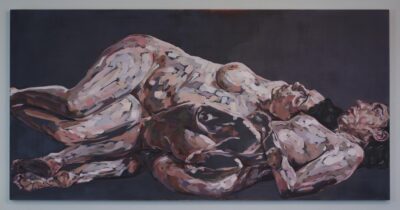
Leaning toward Abstraction
In graduate school, Tamar’s work gravitated more towards abstraction, and her work became more imbued with familial memories and historical narratives. From 1940-44, her grandmother and her family lived in the Lodz Ghetto in Nazi-occupied Poland. In 2019, Tamar traveled to her grandparents’ hometown in Lodz where she felt closer to her history by studying and responding to the architectural surfaces surrounding the address where her grandmother lived — Limanowskiego 48. It was around the doorways and courtyard of this apartment where Tamar felt the deep connection to her grandmother’s experience that inspired her series for her thesis titled Limanowskiego 48.
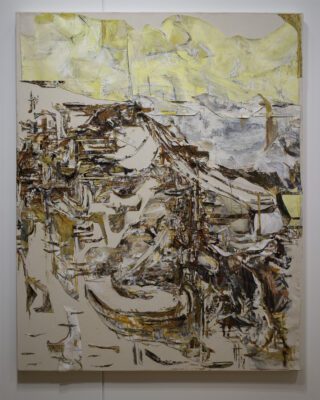
Current Work
It was exciting to talk with Tamar about the work up on the walls in her studio—her works in progress. The series she is working on stems from an artist residency in Berlin during the winter of 2023. While there, Tamar walked around the city for 4 hours a day as part of her studio practice. To see, experience and feel the neighborhood as it is today, she was open to a leisurely pace with stops along the way, sometimes walking backwards and retracing her steps. As Tamar traveled the streets and sidewalks she was locating small plaques called Stolpersteine that commemorate the victims of the Holocaust; she mapped her movement with the app Strava to create a top-down view of the day’s journey. The approximate map generated by the app became the starting drawing of her paintings. Back in the studio in Berlin, Tamar made smaller works of oil pastel, watercolor and stitching. The decision to paint smaller paintings was practical—she wanted the paintings to fit in her luggage to bring them home. The smaller paintings are intended to be her inspiration as she continues this series in her studio in Needham.
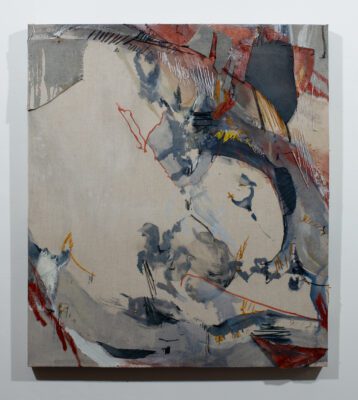
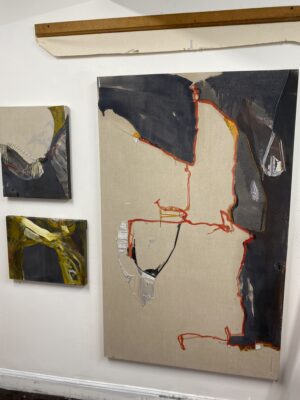
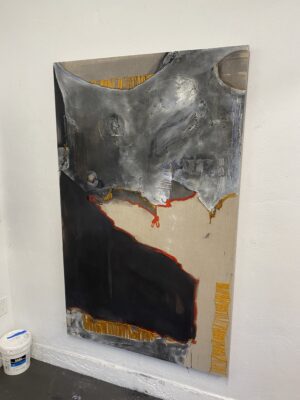
Stitching
Tamar talked about adding stitching to her paintings as if it were the most natural thing in the world. I asked her how that came to be a part of her practice–she grew up sewing her clothes, and worked in a costume shop in college. Also, both sides of her dad’s family were in the textile industry so it had historic family significance. “As soon as I started stitching, it made sense to me.” She likes that stitching is a slow process in contrast to her very quick painting style. “Sometimes I weave it, but there is no particular type of stitch – really I am just making a mark by stitching.” On smaller pieces of paper, stitching is easier but the larger canvas is thickened by gesso so it can be difficult to get the needle through. “My hands have been through a lot and that’s fine.”

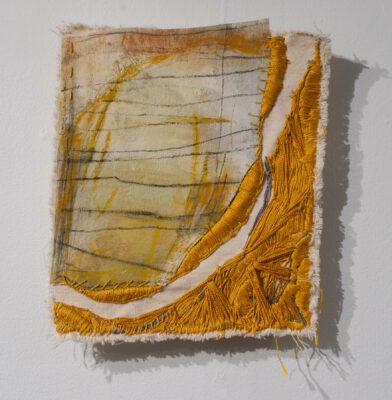
Challenges making Abstract Art
Looking at the large abstract work on the walls I asked: once the initial marks are on the paper how do you come up with the direction for an abstract piece? “I just start painting. I look at shapes and colors. I look for bigger shapes.” Tamar is free and uninhibited in her practice and admits that abstractions don’t always “work” – in fact the ones that don’t work often outnumber the ones that do. Unlike a still life, “with abstract art, if you don’t know the composition from the start so there are a million ways it might not work out.” Tamar finds that with works on paper she is not as worried about pieces working out. Painting on large canvases, especially linen, there is pressure to make sure it works out since it is so expensive and framing and stretching the canvases is labor intensive. “I like to work large. I like to work on paper but don’t like the hassle of using large paper.” The down sides she notes are that you can’t move it easily and it costs a fortune to frame it. Canvas and linen are already framed. Real considerations for a working artist.
Tamar Continues to Travel!
Wherever she goes, Tamar will observe, internalize and create. In her own words, she paints, draws, and stitches as an embodied act of remembrance–an effort to penetrate, inscribe, and process memory. Tamar loves to explore new places and since her travels have inspired her work, keep an eye on her website for new work.

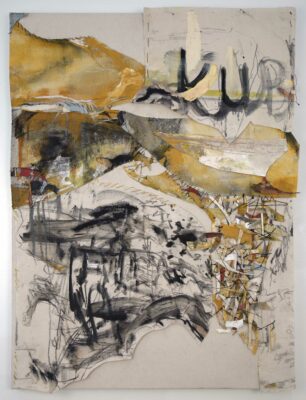
Donate to the Danforth — Your support helps fund exhibitions, programs and scholarships.

